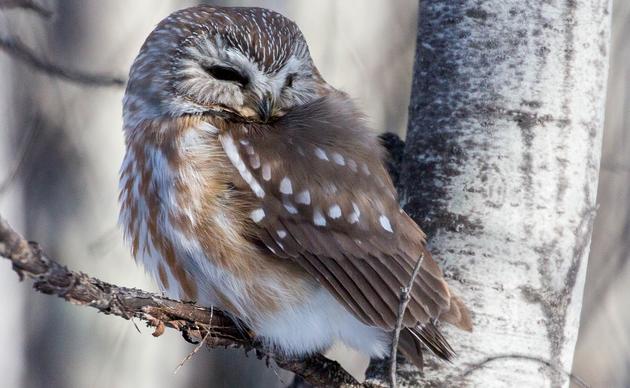Troy, NY (12/5/18) – Audubon New York, the state program of the National Audubon Society, invites birders to discover how community science can inform groundbreaking discoveries through the annual Audubon Christmas Bird Count (CBC). From Friday, December 14 – Saturday, January 5, counts will be held at over 50 locations across the state, covering 15 miles each.
“The Christmas Bird Count is a rewarding way to get involved with Audubon and our partners in your community,” said Ana Paula Tavares, executive director of Audubon New York. “With over 50 counts in New York State alone, we hope to see record numbers of volunteers participate in support of their local birds.”
This year, the Audubon Christmas Bird Count will mobilize over 72,000 volunteer bird counters in more than 2,500 locations across the Western Hemisphere. The Audubon Christmas Bird Count utilizes the power of volunteers to track the health of bird populations at a scale that scientists could never accomplish alone. Data compiled in New York will record every individual bird and bird species seen in a specified area, contributing to a vast community science network that continues a tradition stretching back more than 100 years.
“The Christmas Bird Count is a tradition that everyone can participate in,” said Geoff LeBaron, Audubon’s Christmas Bird Count Director. “Adding observations to more than a century of data helps scientists and conservationists discover trends that make our work more impactful. Participating in the Christmas Bird Count is a fun tradition for anyone and everyone.”
To date over 300 peer-reviewed articles have resulted from analysis done with Christmas Bird Count data. Bird-related community science efforts are also critical to understanding how birds are responding to a changing climate. This documentation is what enabled Audubon scientists to discover that 314 species of North American birds are threatened by global warming as reported in Audubon’s groundbreaking Birds and Climate Change Study. The tradition of counting birds combined with modern technology and mapping is enabling researchers to make discoveries that were not possible in earlier decades.
This fun, nationwide community science project provides ornithologists with a crucial snapshot of our native bird populations during the winter months. Each individual count is performed in a count circle with a diameter of 15 miles. At least ten volunteers, including a compiler to coordinate the process, count in each circle. The volunteers break up into small parties and follow assigned routes, which change little from year to year, counting every bird they see. In most count circles, some people also watch feeders instead of following routes. To sign up for a count, please visit https://www.audubon.org/conservation/join-christmas-bird-count.
The Audubon Christmas Bird Count began in 1900 when Dr. Frank Chapman, founder of Bird-Lore – which evolved into Audubon magazine – suggested an alternative to the holiday “side hunt,” in which teams competed to see who could shoot the most birds. 118 years of counting birds is a long time, but the program somehow brings out the best in people, and they stay involved for the long run. And so the tradition continues.
The Audubon Christmas Bird Count is a community science project organized by the National Audubon Society. There is no fee to participate and the quarterly report, American Birds, is available online. Counts are open to birders of all skill levels and Audubon’s free Bird Guide app makes it even easier to learn more. For more information and to find a count near you visit www.christmasbirdcount.org.
About Audubon New York
Audubon New York, a state program of the National Audubon Society, protects birds and the places they need, today and tomorrow, throughout the Americas using science, advocacy, education and on-the-ground conservation. Audubon’s state programs, nature centers, chapters and partners have an unparalleled wingspan that reaches millions of people each year to inform, inspire and unite diverse communities in conservation action. Since 1905, Audubon’s vision has been a world in which people and wildlife thrive. Audubon is a nonprofit conservation organization. Learn more at www.ny.audubon.org.
###
Contact: Sharon Bruce, Communications Manager, sbruce@audubon.org, 518.869.9731

By Audubon New York
Contribute to Our Conservation Success
You play an important role in our mission to protect birds & the habitats they need to survive.




